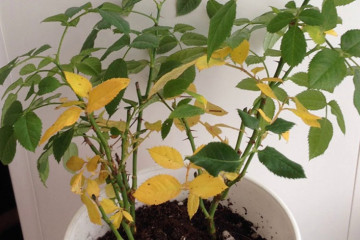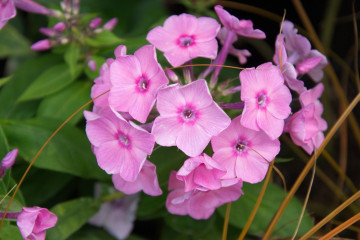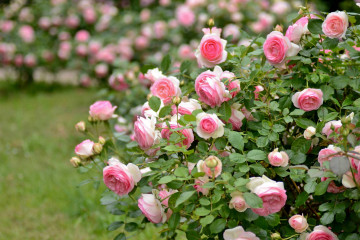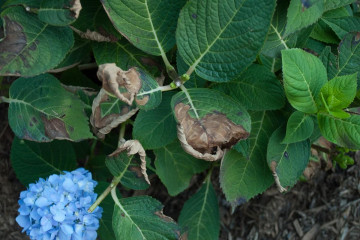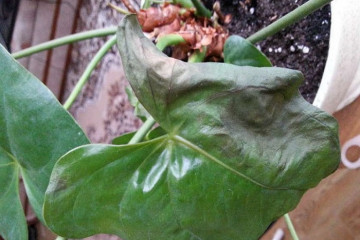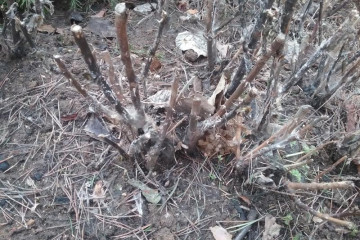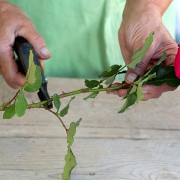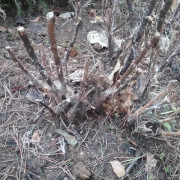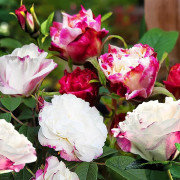The leaves of a rose turn black: what to do when the foliage, buds, stem turn black
Content:
Gardeners who grow roses in their area may face a problem when the stems, buds or leaves of the flower begin to turn black. The most common causes are fungal diseases or improper care. Poor lighting, damage to the plant, neglect - all this can provoke the development of diseases.
Why do the stems of a rose turn black
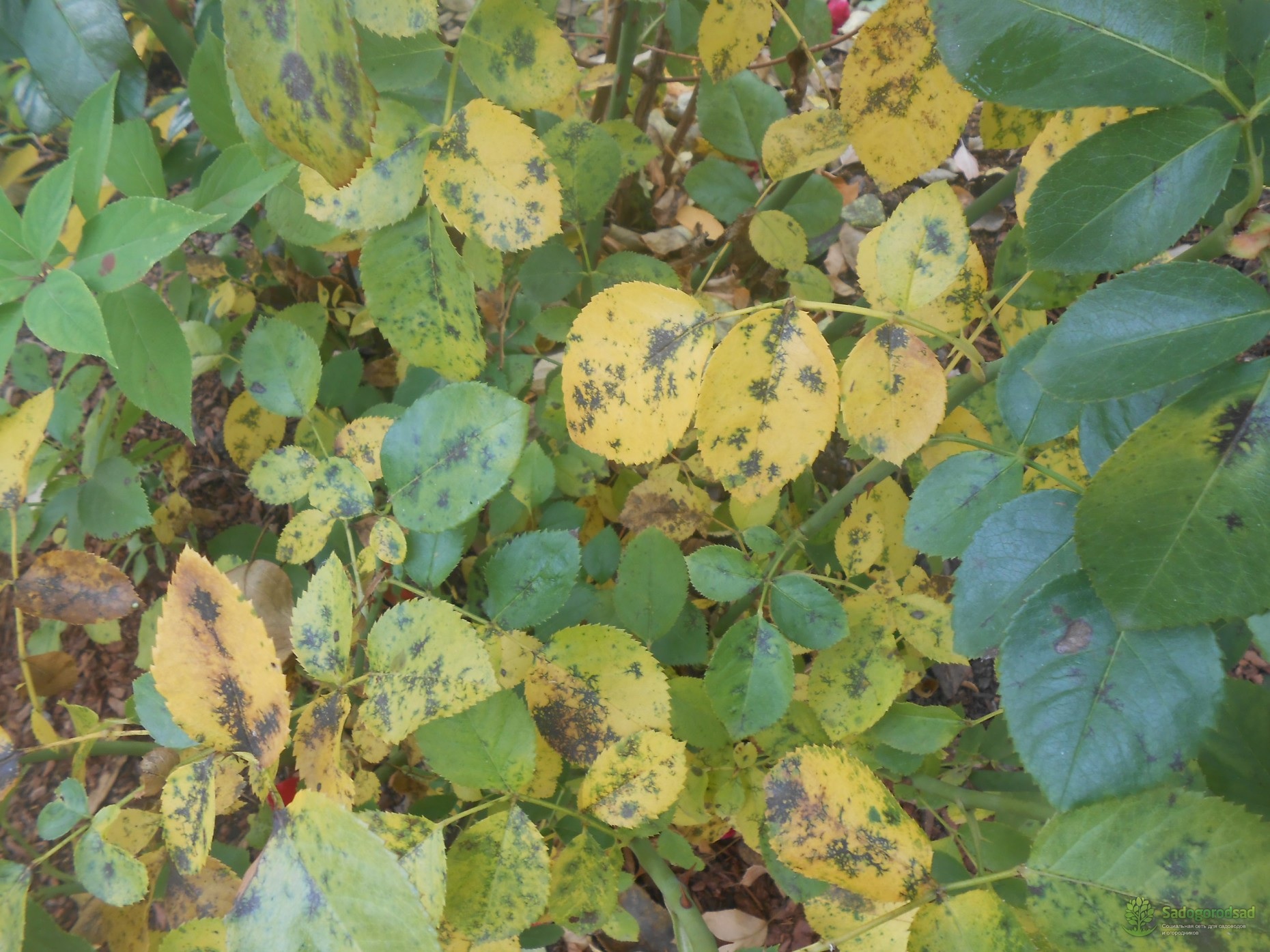
The blackened leaves of the rose indicate a violation of the conditions of keeping and caring for the flower.
The most common reason why the stems of a plant begin to darken is bacterial contamination. Pathology is manifested by the formation of brown spots. In the process of development of the disease, the affected areas begin to die off, black ulcers appear. Then the stems dry out.
Reasons for the appearance of black spots on rose leaves
If the leaves of the rose turn black, then the bacteria have spread further along the flower. Watery, rounded black spots appear on the leaves. During dry weather, areas with spots dry out, crack. Gradually, the leaves begin to fall off. On them you can see holes surrounded by a dark border. In wet weather, the spots merge, the leaves turn completely black.
Another reason why the petals of a rose turn black may be a disease of the plant with black spot. It develops in summer with warm and rainy weather. The main symptoms of infestation are the formation of purplish-white spots on the upper side of the leaves. Further, fungal spores appear in this place, the spots become darker, the area swells.
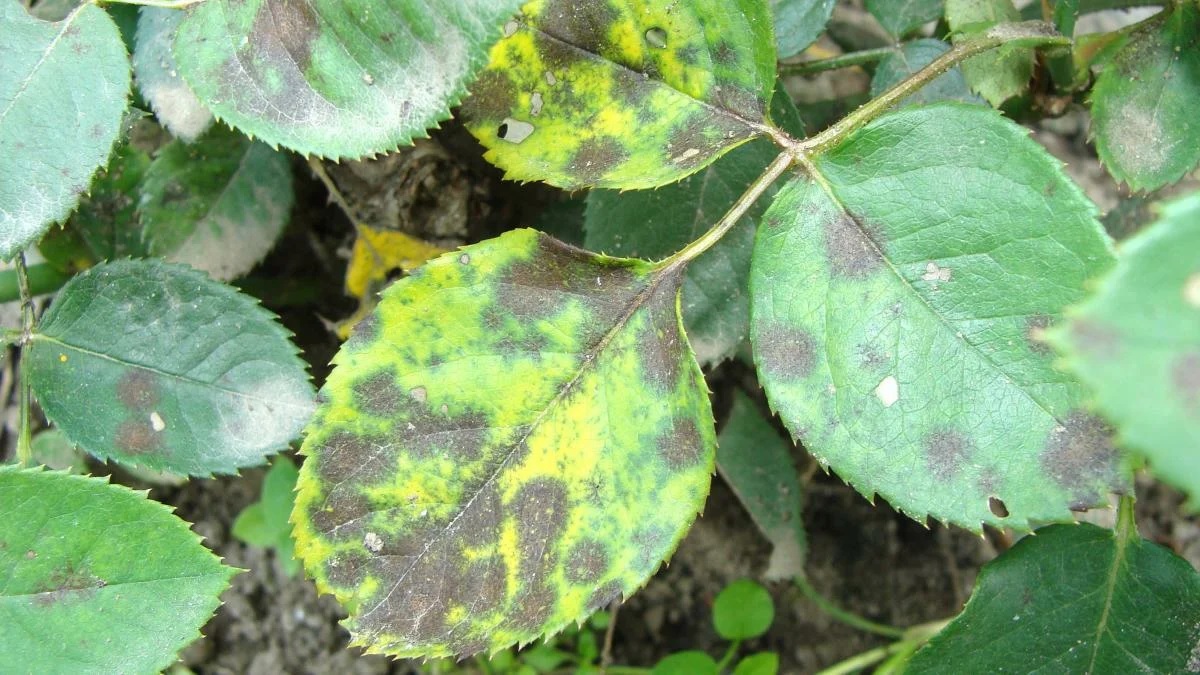
Rose leaves may begin to darken due to the development of black spot
Why do roses buds turn black
Powdery mildew may be the cause of blackness on flower buds. This is a fungal disease that begins with damage to the trunk and leaves of the plant. Later it spreads to flowers. They are deformed, stop opening. The bloom on the flower gradually darkens, the buds turn black and fall off.
What varieties are most susceptible to damage
There are no flower varieties that are completely immune to disease. But the classic old species are most susceptible to it.
Breeders are working diligently to develop varieties that are less susceptible to pathology.
What affects the development of the disease
The danger of the disease lies in the fact that it does not appear immediately. The first symptoms can be noticed only a month after infection with the fungus. By this time, it is already actively developing.
Favorable conditions for the development of black spot
The ideal conditions for the growth of the fungus are created in humid and warm weather. The risk of infection also increases if the bush is located in a very thickened place, since air circulation will be impaired.
The reason why the leaves of the rose darken may be due to improper fertilization.Dangerous as their shortage and overabundance.
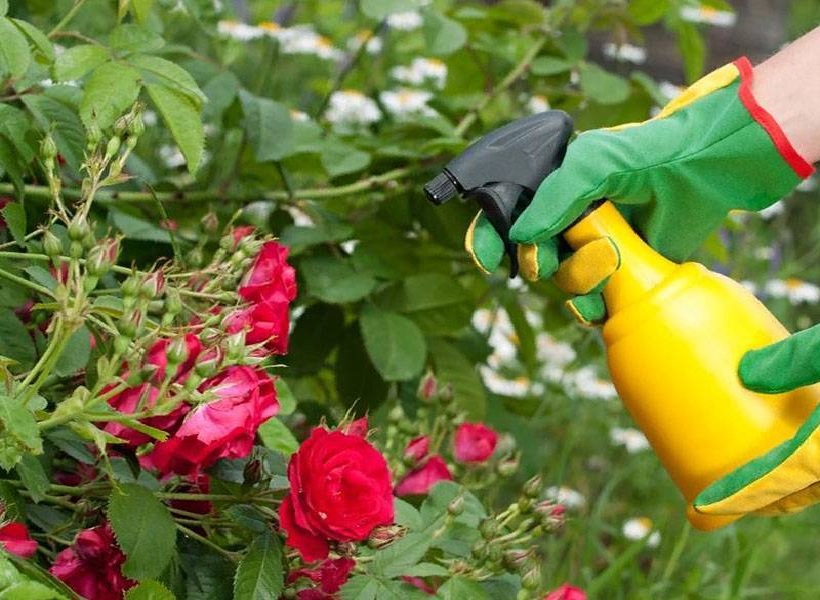
Improper use of fertilizers can trigger the development of black spot
Does the rose need help, and what should it be
It is important for gardeners to know, if the leaves of a rose turn black, what to do first. The main methods of struggle are:
- pruning the affected parts of the bush;
- processing the plant with antifungal agents.
The use of folk methods gives a positive result only at an early stage of the development of the disease. If it develops for a long time, only chemical agents can be used for treatment.
How to avoid blotchiness on roses
Before you start treating the plant, you need to find out why the buds of a rose in the garden turn black and fix the problem. The most effective folk methods include:
- Colloidal sulfur - 30 g of the product must be dissolved in a bucket of water. Roses are sprayed three times with a break of ten days.
- Horsetail decoction - both raw and dried raw materials can be used to prepare the solution. If the horsetail is fresh, you need to take it at the rate of 1 kg per bucket of water, dry grass is brewed in a proportion of 150 g per bucket. Horsetail needs to be insisted for a day, then boil it for 30 minutes. The resulting solution is used after diluting it: one part to ten parts of water.
- Nettle infusion - at home, you can make an infusion from the leaves, roots and stems of the plant, you cannot take seeds and flowers. Fresh raw materials are poured into a bucket halfway, then poured with boiling water. The tool should be infused for two days. In order for fermentation to be as active as possible during this period, you need to regularly mix the contents of the bucket.
- Liquid manure - for the preparation of funds, you need to fill the rotted manure with water at a rate of one to two. Leave the resulting mixture for three days. After that, the agent must be filtered, diluted with water one to two, and the plants must be treated three times every two weeks.
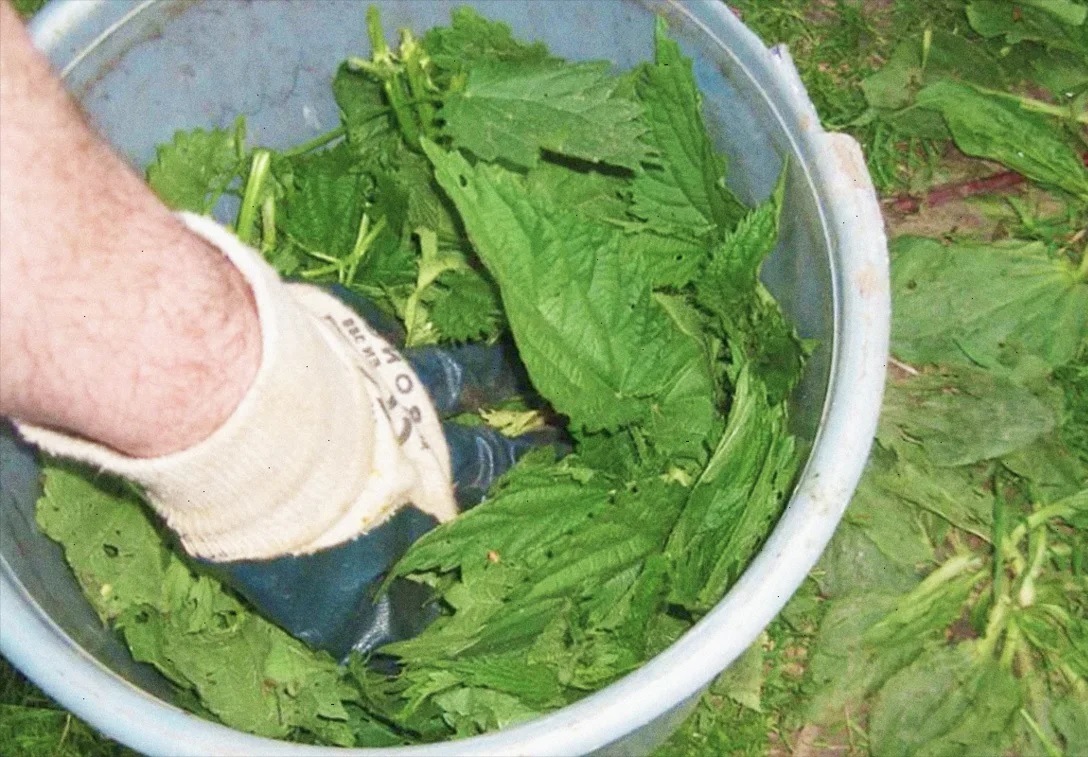
You can get rid of blackening on a rose with the help of nettle infusion
Preventive measures to combat black spot
If the stem of a rose turns black, what to do, how to fix the situation, will depend on the cause of the disease. To avoid infection, reduce the risk, you can take preventive measures:
- Choose the right landing site. Roses are very demanding on the sun. The bush should receive enough light throughout the day.
- Provide roses with favorable conditions for growth. The soil for flowers should be slightly acidic. If the soil is acidic, you need to add 250 g of lime and 500 g of dolomite flour to it.
- Feed the plant in a timely manner. Fertilizers are required during the growing season, during and after flowering. Roses need potassium, phosphorus, trace elements.
- Carrying out sanitary measures in the garden. They are needed in the spring and fall. Dry, damaged branches are removed. As soon as the leaves start to turn yellow, they need to be removed. In the fall, before covering the bushes for the winter, you need to completely rid the root circle of fallen leaves.
To avoid this, you need to treat the soil with a 0.01% solution of copper sulfate before sheltering. Experienced gardeners recommend taking turns processing with iron and copper sulfate. In spring, roses are sprayed with Strobi or Profit preparations.
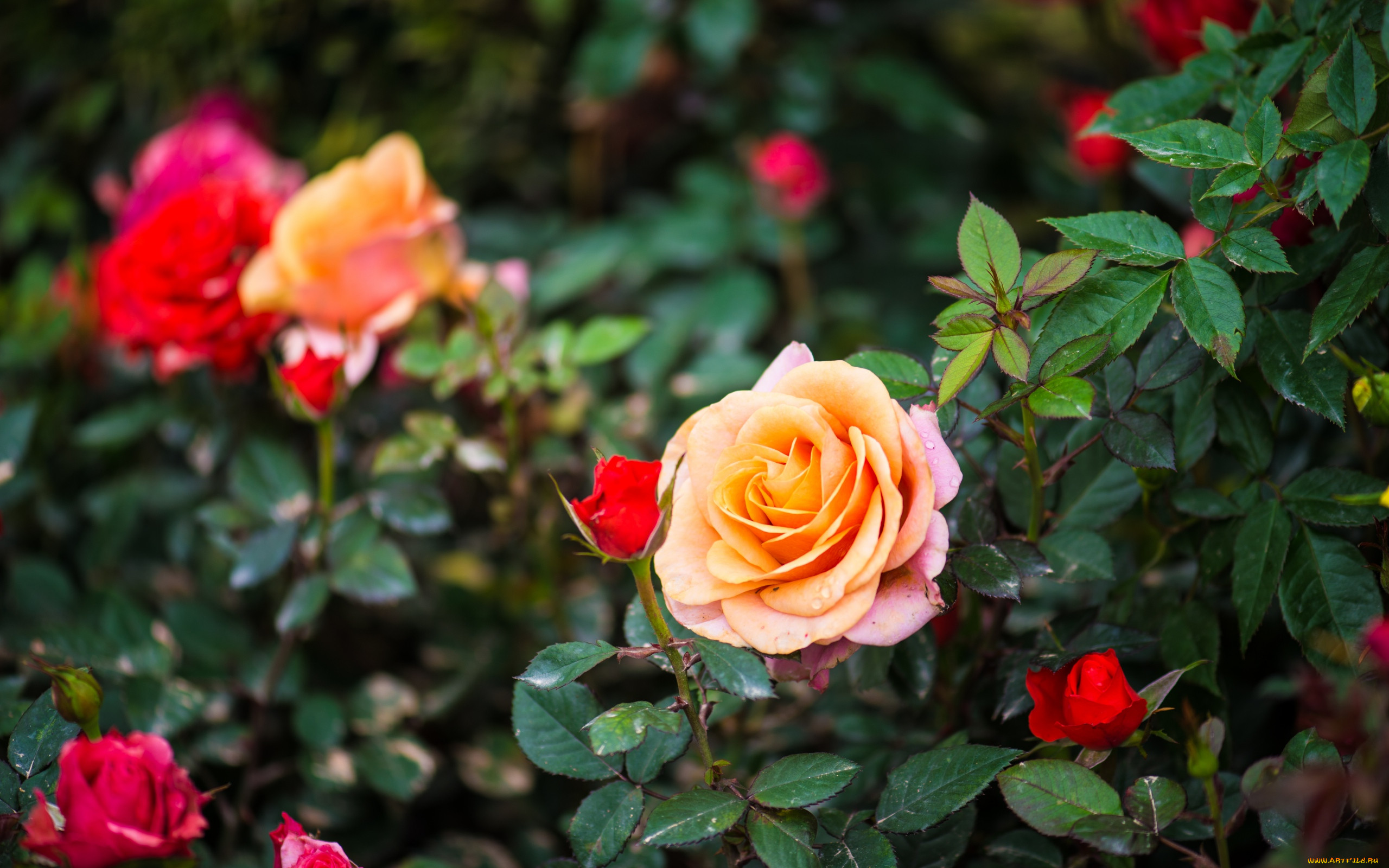
Subject to preventive measures, it is not difficult to grow a rose in the garden.
It is not recommended to plant rose bushes in places where these flowers have already grown. Planting can only be carried out after five years.
As a preventive measure, it is recommended to carry out the treatment with tobacco infusion. To prepare the solution, you need to pour half a kilogram of tobacco leaves with a bucket of boiling water and leave for five days. Before processing, the infusion is filtered, used weekly.
Knowing what to do if the rosebuds turn black, you can have time to take timely measures to eliminate the infection and save the plant. If you miss the initial stage, the bush can not only die on its own, but also infect other crops in the garden.
